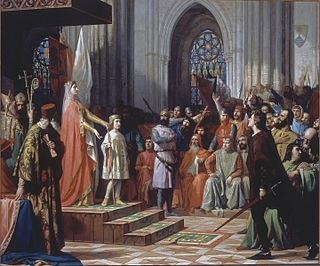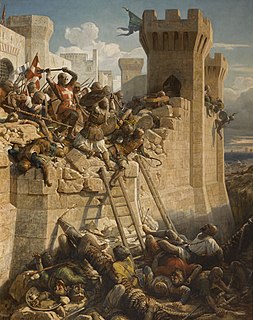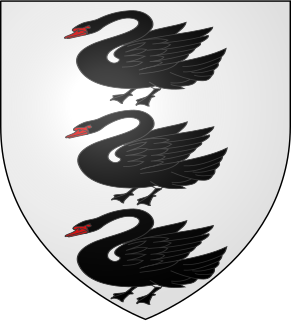
Sir William Wallace was a Scottish knight who became one of the main leaders during the First War of Scottish Independence.
The 1300s was a decade of the Julian Calendar that began on 1 January 1300 and ended on 31 December 1309.

Year 1214 (MCCXIV) was a common year starting on Wednesday of the Julian calendar, the 1214th year of the Common Era (CE) and Anno Domini (AD) designations, the 214th year of the 2nd millennium, the 14th year of the 13th century, and the 5th year of the 1210s decade.
The 1290s was a decade of the Julian Calendar which began on January 1, 1290, and ended on December 31, 1299.

Year 1295 (MCCXCV) was a common year starting on Saturday of the Julian calendar.

Year 1292 (MCCXCII) was a leap year starting on Tuesday of the Julian calendar.

Year 1291 (MCCXCI) was a common year starting on Monday of the Julian calendar.

Year 1290 (MCCXC) was a common year starting on Sunday of the Julian calendar.

Year 1286 (MCCLXXXVI) was a common year starting on Tuesday of the Julian calendar.

Year 1289 (MCCLXXXIX) was a common year starting on Saturday of the Julian calendar.

The Wars of Scottish Independence were a series of military campaigns fought between the Kingdom of Scotland and the Kingdom of England in the late 13th and early 14th centuries.

The Battle of Stirling Bridge was a battle of the First War of Scottish Independence. On 11 September 1297, the forces of Andrew Moray and William Wallace defeated the combined English forces of John de Warenne, 6th Earl of Surrey, and Hugh de Cressingham near Stirling, on the River Forth.

John Balliol, known derisively as Toom Tabard, was King of Scots from 1292 to 1296. Little is known of his early life. After the death of Margaret, Maid of Norway, Scotland entered an interregnum during which several competitors for the Crown of Scotland put forward claims. Balliol was chosen from among them as the new King of Scotland by a group of selected noblemen headed by King Edward I of England.
Andrew Moray, also known as Andrew de Moray, Andrew of Moray, or Andrew Murray, was an esquire, who became one of Scotland's war-leaders during the First Scottish War of Independence. He initially raised a small band of supporters at Avoch Castle in early summer 1297 to fight King Edward I of England, and soon had successfully regained control of north Scotland for the Scots king, John Balliol. He subsequently merged his army with that of William Wallace, and jointly led the combined army to victory at the Battle of Stirling Bridge on 11 September 1297. Moray was mortally wounded in the fighting at Stirling, dying at an unknown date and place that year.

The First War of Scottish Independence was the first of a series of wars between English and Scottish forces. It lasted from the English invasion of Scotland in 1296 until the de jure restoration of Scottish independence with the Treaty of Edinburgh–Northampton in 1328. De facto independence was established in 1314 at the Battle of Bannockburn. The wars were caused by English kings attempting to establish their authority over Scotland while Scots fought to keep English rule and authority out of Scotland.

Sir Hugh de Cressingham was the treasurer of the English administration in Scotland from 1296 to 1297. He was hated by the Scots and did not seem well liked even by the English. He was an adviser to John de Warenne, 6th Earl of Surrey at the Battle of Stirling Bridge. He suggested a full-scale attack across the bridge, which cost the English the battle and led to his death.

Sir William Douglas "le Hardi", Lord of Douglas was a Scottish nobleman and warlord.
Events from the 1290s in England.
The Capitulation of Irvine was an early armed conflict of the Wars of Scottish Independence which took place on 7 June 1297. Due to dissension among the Scottish leadership, it resulted in a stand-off.
The English invasion of Scotland of 1296 was a military campaign undertaken by Edward I of England in retaliation to the Scottish treaty with France and the renouncing of fealty of John, King of Scotland and Scottish raids into Northern England.














